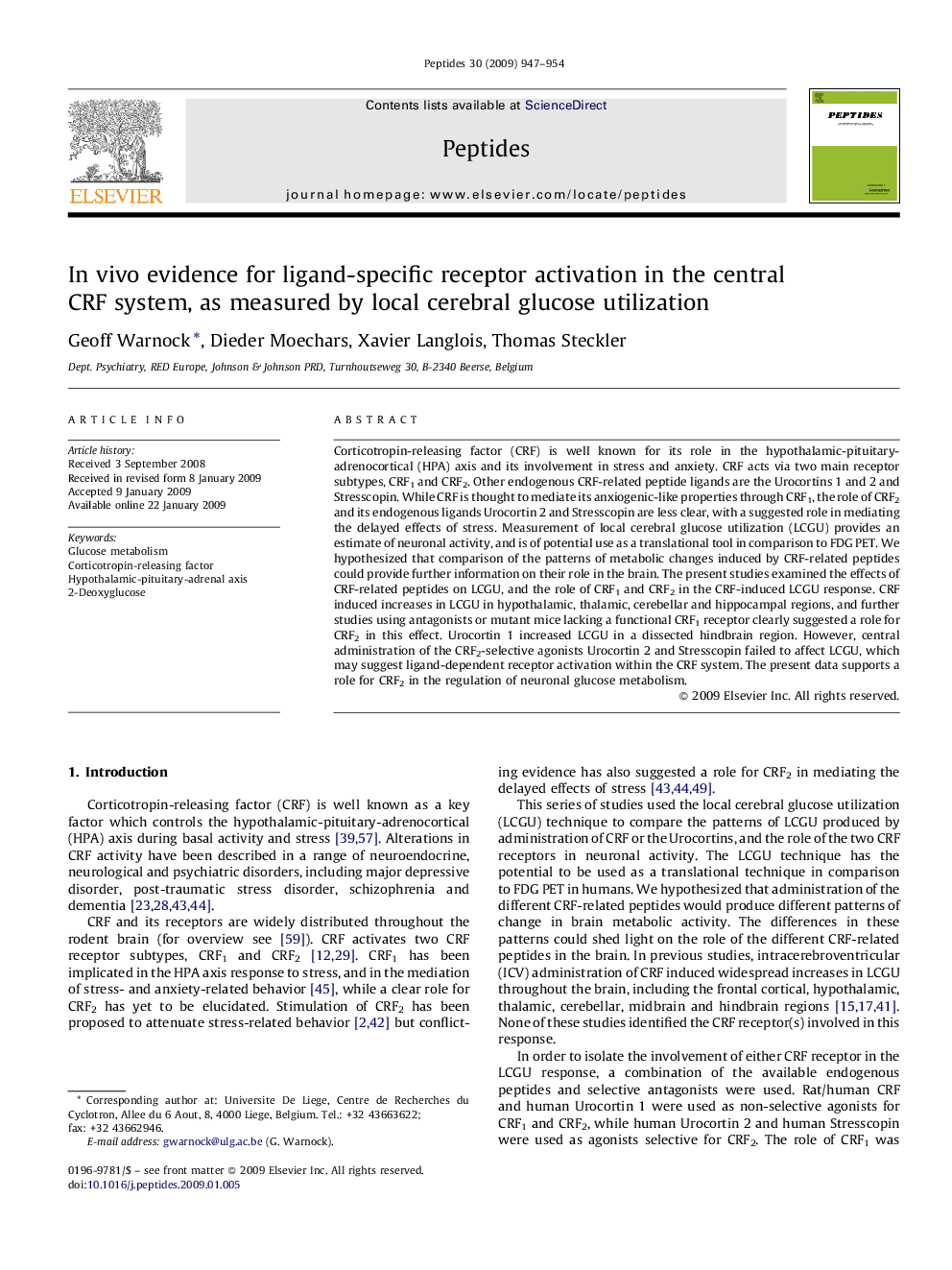| Article ID | Journal | Published Year | Pages | File Type |
|---|---|---|---|---|
| 2007335 | Peptides | 2009 | 8 Pages |
Abstract
Corticotropin-releasing factor (CRF) is well known for its role in the hypothalamic-pituitary-adrenocortical (HPA) axis and its involvement in stress and anxiety. CRF acts via two main receptor subtypes, CRF1 and CRF2. Other endogenous CRF-related peptide ligands are the Urocortins 1 and 2 and Stresscopin. While CRF is thought to mediate its anxiogenic-like properties through CRF1, the role of CRF2 and its endogenous ligands Urocortin 2 and Stresscopin are less clear, with a suggested role in mediating the delayed effects of stress. Measurement of local cerebral glucose utilization (LCGU) provides an estimate of neuronal activity, and is of potential use as a translational tool in comparison to FDG PET. We hypothesized that comparison of the patterns of metabolic changes induced by CRF-related peptides could provide further information on their role in the brain. The present studies examined the effects of CRF-related peptides on LCGU, and the role of CRF1 and CRF2 in the CRF-induced LCGU response. CRF induced increases in LCGU in hypothalamic, thalamic, cerebellar and hippocampal regions, and further studies using antagonists or mutant mice lacking a functional CRF1 receptor clearly suggested a role for CRF2 in this effect. Urocortin 1 increased LCGU in a dissected hindbrain region. However, central administration of the CRF2-selective agonists Urocortin 2 and Stresscopin failed to affect LCGU, which may suggest ligand-dependent receptor activation within the CRF system. The present data supports a role for CRF2 in the regulation of neuronal glucose metabolism.
Keywords
Related Topics
Life Sciences
Biochemistry, Genetics and Molecular Biology
Biochemistry
Authors
Geoff Warnock, Dieder Moechars, Xavier Langlois, Thomas Steckler,
